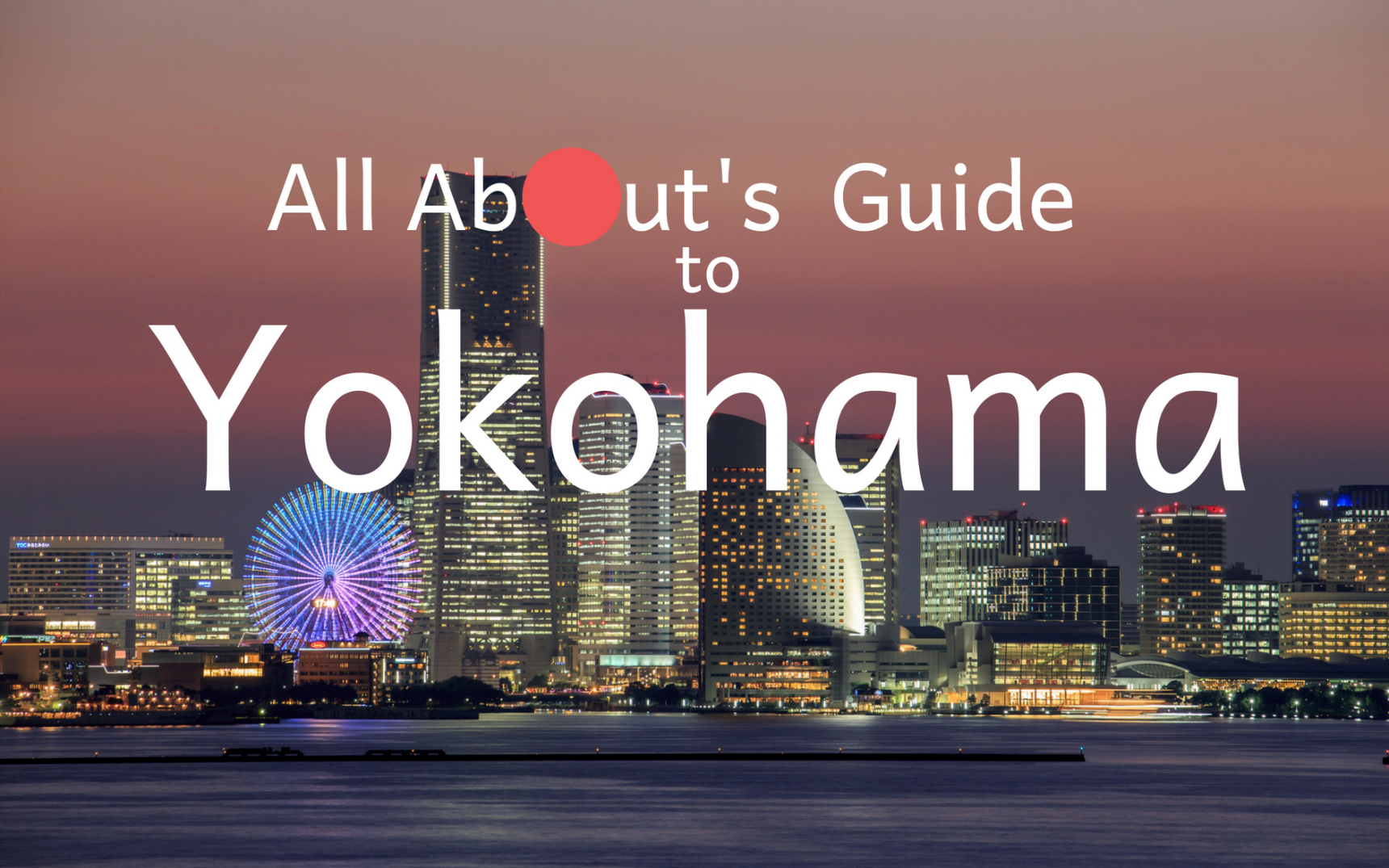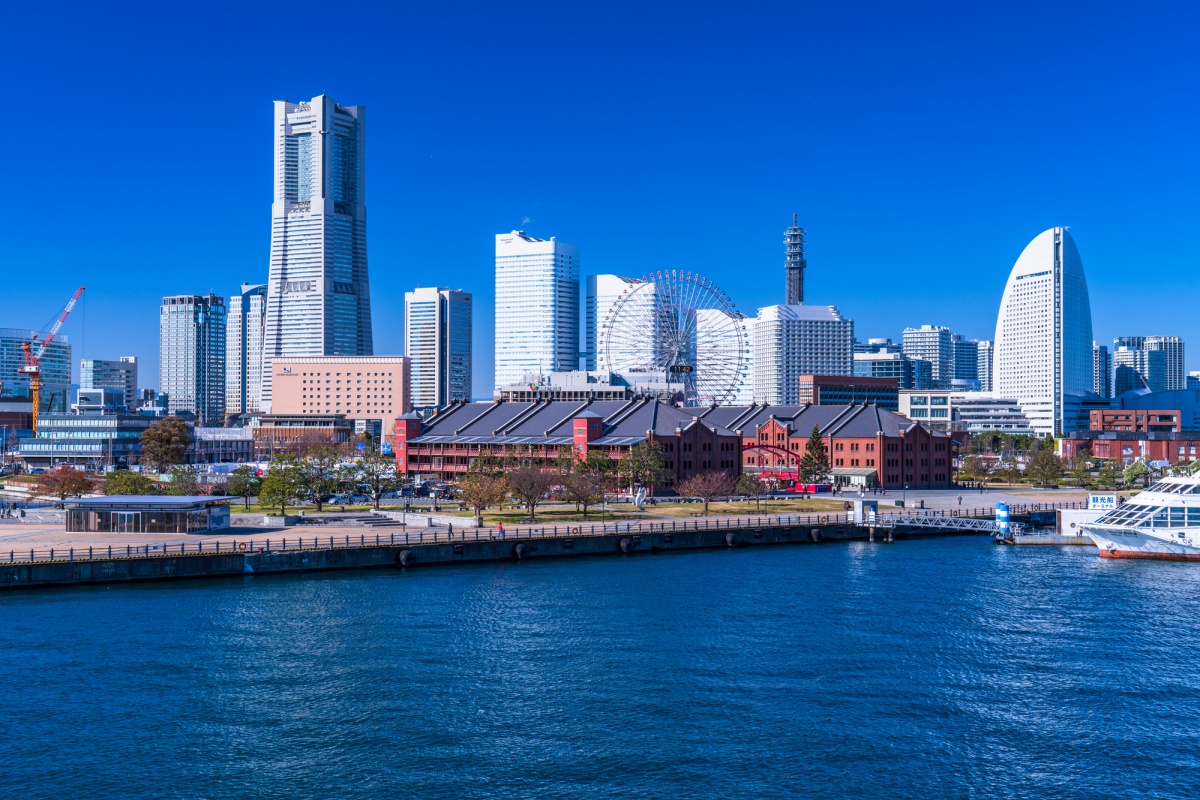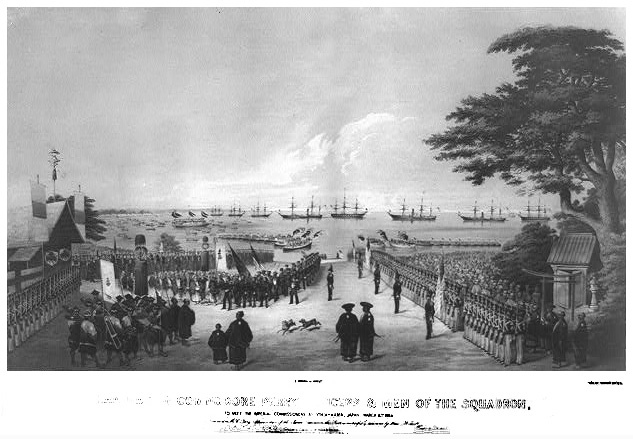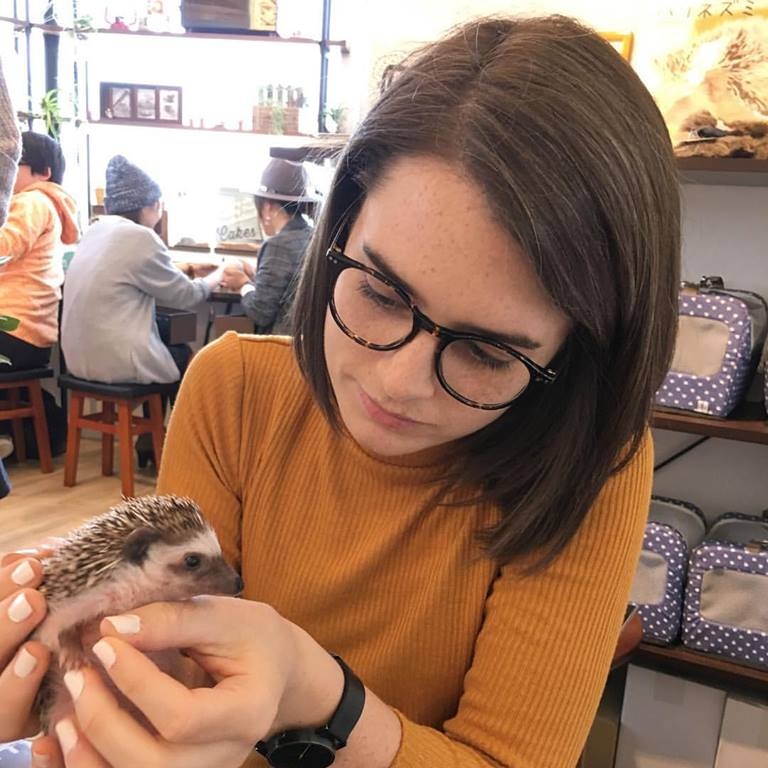All About's Guide to Yokohama
Yokohama may be right next to Tokyo, but it has a unique identity all its own! A bustling port, Yokohama was considered the entrance to Japan by the rest of the world. As a result, it has developed a culture that seamlessly blends Japanese traditions with international influences. We'll help you make the most of your time in the city by the bay!
By Lucy DaymanKey Yokohama Facts
Recorded history of Yokohama (横浜) dates back to the 11th century, when it was merely a humble fishing village of some 600 people. Yokohama came under the direct control of the feudal government during the Edo Period (1603 - 1868) and officially opened its port in 1859, several years after the signing of the Japan-US Treaty of Peace and Amity—the direct result of Commodore Matthew Perry's "Gunboat Diplomacy"—as well as several other treaties with Holland, Russia, Great Britain and France.
Export of silk, tea and other goods helped the city grow at a rapid pace. Tragedy struck with the Great Kanto Earthquake in 1923, when the resulting fires devastated the the city and claimed 20,000 lives. As the city recovered, Yokohama became a hub of industrialization and manufacturing, as well commercial trading. However, U.S. military bombings toward the end of World War II once again razed the city to the ground. Reconstruction in the post-war period was slow going, but the city was transferred back to the Japanese in 1951, and eventually grew into the booming metropolis it is today.
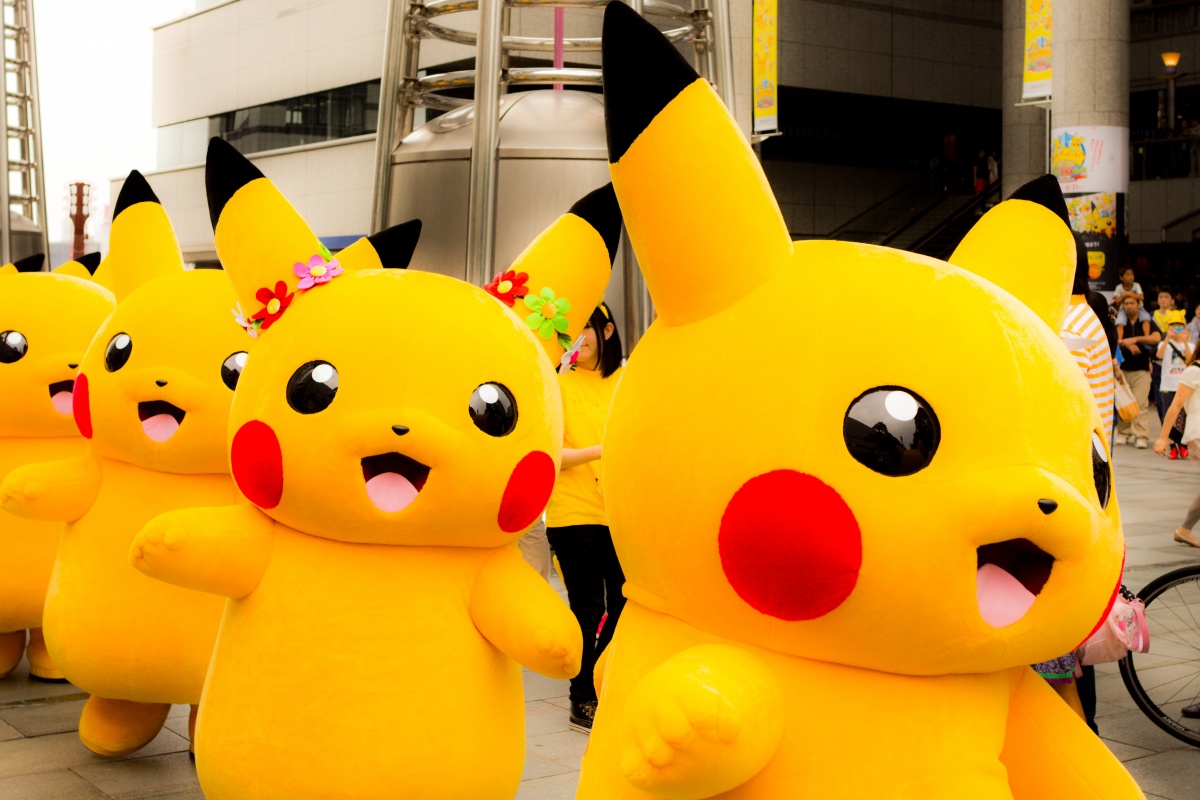
https://www.flickr.com/photos/yoshikazut/14905092432/in/photolist-oH7uGh-LgN9dM-MWKKaW-2a9fSPV-28WeX8E-2a36HUf-28GF2X4-LjMjN8-LgN9dB-Yjc6uk-XhSMHk-Yf4vkw-Yjc7Ft-oMp5GJ-Gj2U4D-XfUaus-Gj2THD-YwGy4M-Gj2TN8-Yjc84x-XfU9JQ-Yf4zC9-WpJPPg-Yjc6jR-293HNV5-28GyM9P-2
Yokohama has an estimated population of 3.7 million spread throughout its 18 wards. It has one of the world's largest Chinatowns, which contains about 500 different restaurants, Chinese grocery stores and more stalls and shops than you can shake a stick at. Its Minato Mirai harbor district is still an incredibly popular tourist and shopping area, and the distinct hotels make up the city's iconic skyline. Summer is a popular time to visit, thanks in part to its annual Pikachu Outbreak event and seaside fireworks displays.
Similar to Tokyo, Yokohama can get quite hot in the summer and averages temperatures of 27 degrees Celsius (80°F) in August. Winters are cold but mild, with temperatures around 6 degrees Celsius (43°F) and very little snowfall. As a coastal city, Yokohama sees the most rain in September, during typhoon season.
Top 5 Yokohama Sights
There's a lot to explore in Yokohama, but here are five spots that any visitor absolutely should not miss.
1. Minato Mirai
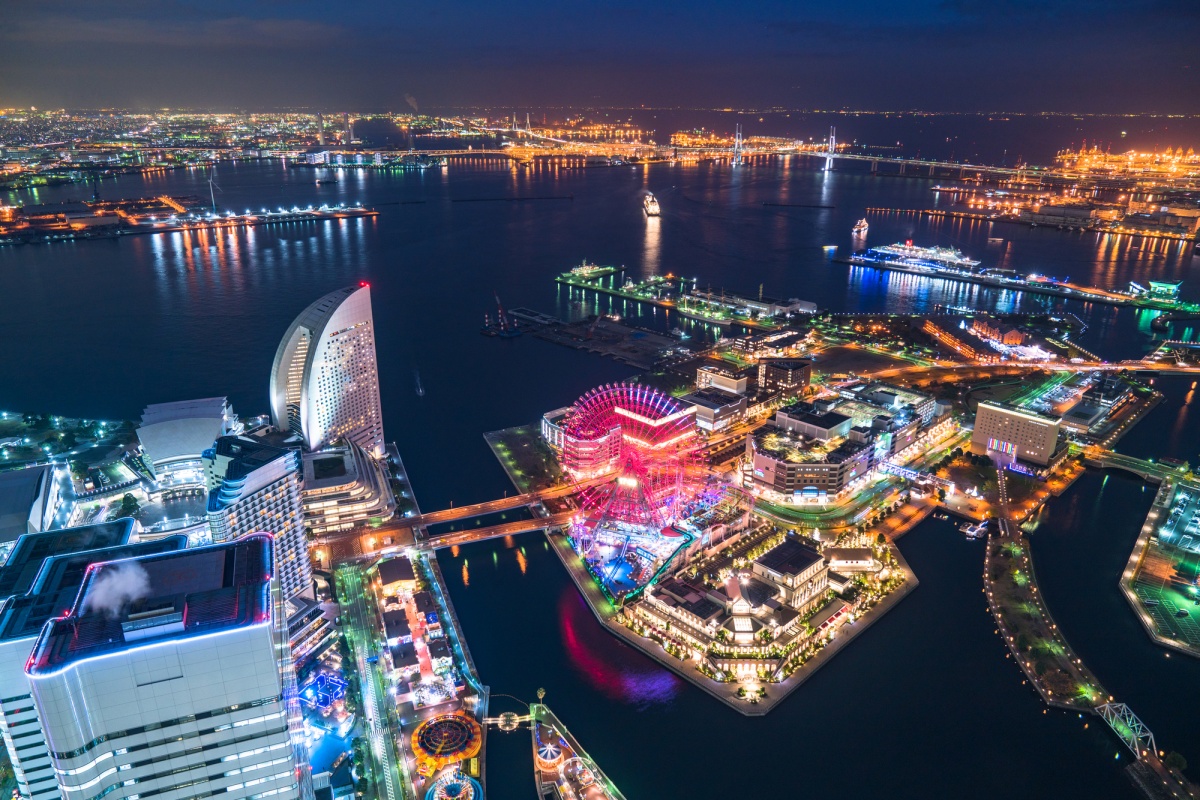
Ask any Yokohama native the best tourist places to visit in the city and it's guaranteed that Minato Mirai will in their top three mentioned areas. Officially known as Minato Mirai 21, this futuristic haborside neighborhood is home to many of the city’s main attractions, including the retro-style amusement park Cosmo World (as well as the colorful Cosmo Clock 21 ferris wheel), the Aka-Renga Sogo—historic warehouses that have been converted into a shopping center—and the Yokohama Museum of Art. Minato Miarai is particularly popular at night—the bright lights of the city reflect off the bay, setting a romantic scene that attracts swarms of couples both young and old.
2. Landmark Tower

https://pixta.jp
Located within the Minato Mirai district, this popular shopping and entertainment complex is worth a mention on its own. When it was finished in 1993, it was the tallest building in Japan, though that changed in 2012 with construction of Abeno Harukas in Osaka. Inside you’ll find endless shopping outlets, as well as mouthwatering restaurants and the five-star Yokohama Royal Park Hotel. Its most exciting feature is Sky Garden, an 360-degree observation deck on the 69th floor. The view of the city at night is simply divine, and during the day (when the weather is clear) it offers an equally stunning glimpse of Mount Fuji.
3. Nissin Cup Noodle Museum
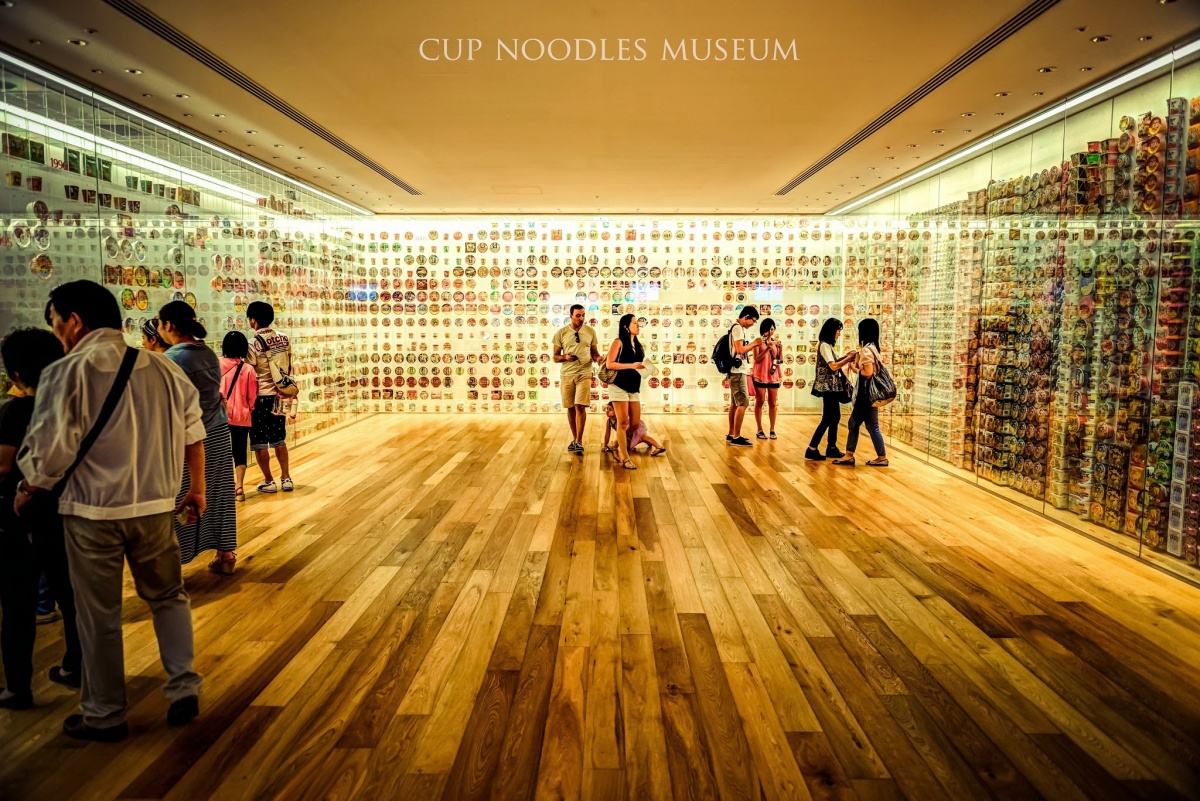
https://www.flickr.com/photos/alebaffa/10017804575/
One of the city’s more unique tourist attractions, the Nissin Cup Noodles Museum is an interactive museum designed as a love letter to the inventor of instant noodles (and founder of Nissin Food Products) Momofuku Ando. You can learn the history of Cup Noodles and its founder, and get hands on with the process of creating Chicken Ramen (one of Nissin's first and most beloved offerings), create your own original package of Cup Noodles, admire noodle-inspired modern art and taste noodles from across the globe at their onsite Noodles Bazaar. The gift shop has plenty of original goods that you won't find anywhere else, so be sure to pick up a souvenir if you're true fan!
4. Sankeien Garden
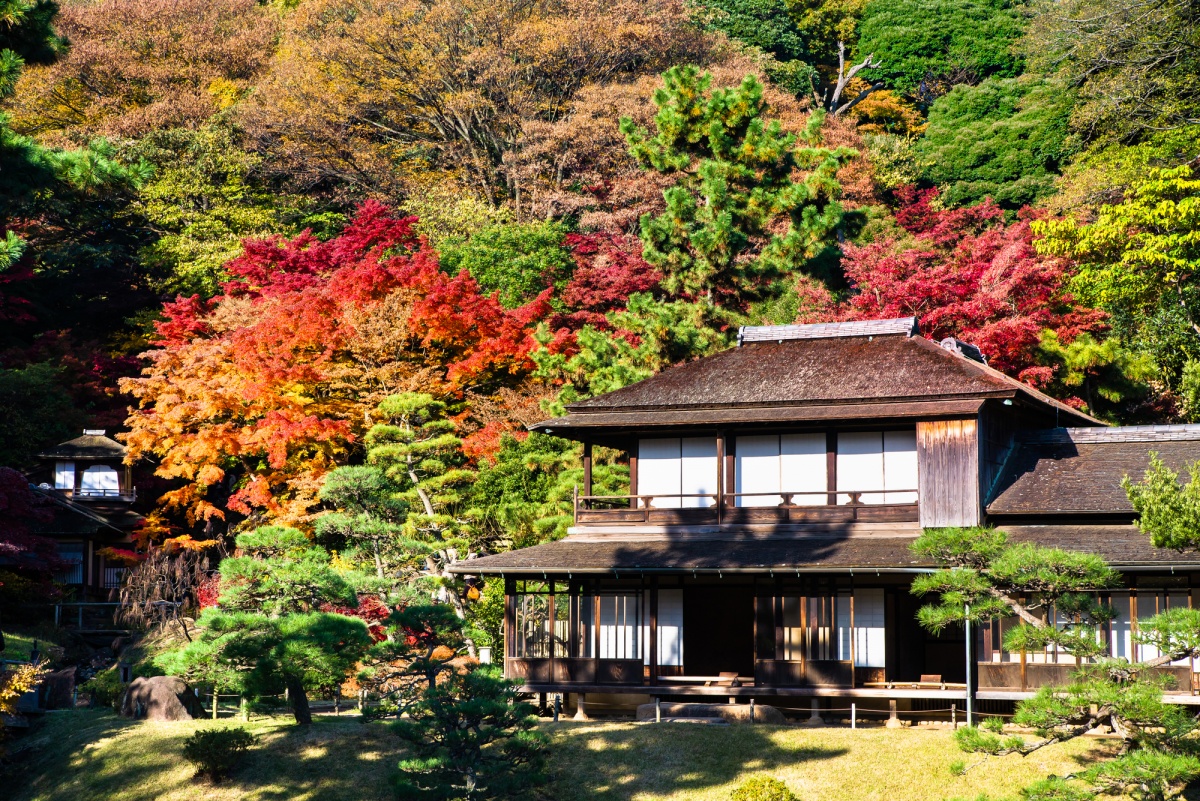
http://pixta.jp
Located in southern Yokohama, Sankeien Garden is an expansive, tranquil Japanese-style garden home to a number of historic buildings, weaving walking trails and quaint teahouses. Many say it has an atmosphere that feels much more like Kyoto than Yokohama. Due to the large variety of flora, it has a different face every season. Visitors can enjoy plum blossoms and cherry blossoms in the spring, azaleas and fireflies in summer and fall leaves and chrysanthemums in fall. For those who want to dive into the history even deeper, there are also volunteer guides who can provide a tour through the grounds in English several days of the week.
5. Motomachi Chukagai
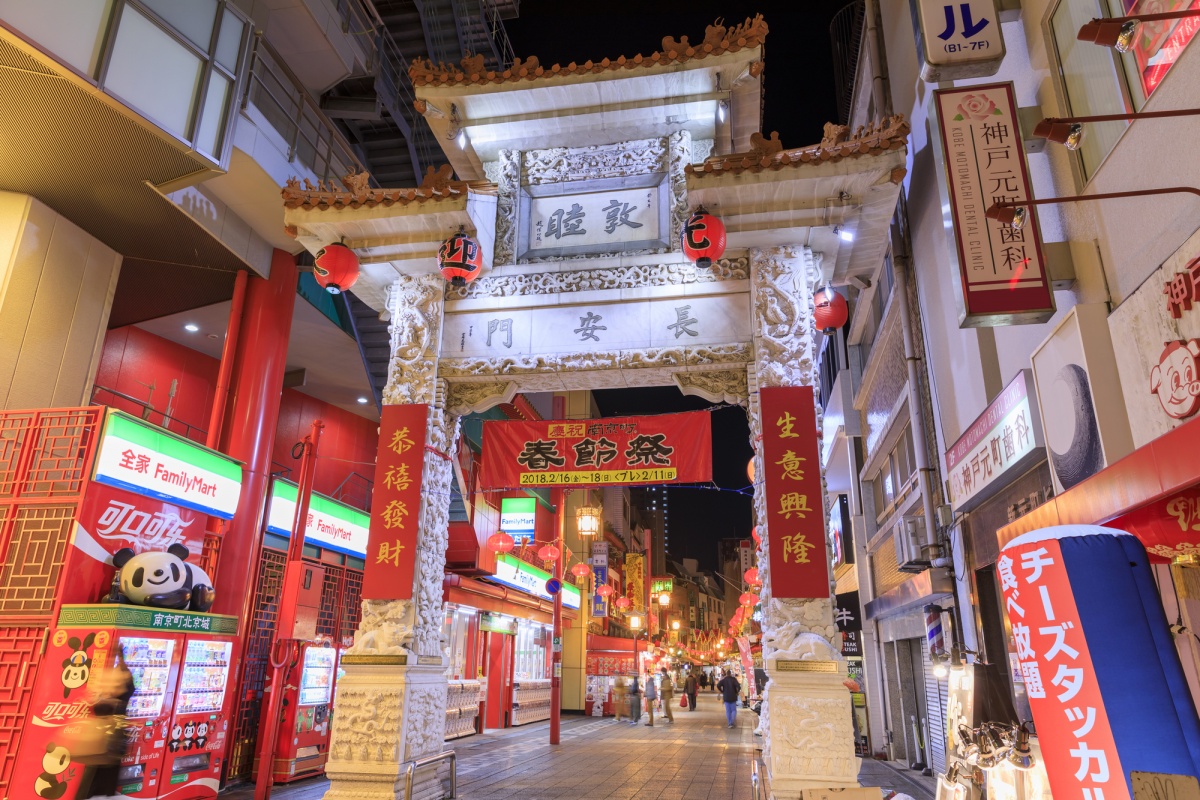
https://pixta.jp
Yokohama's Chinatown is one of the largest in the world. It's home to a number of vibrant festivals—especially during Chinese New Year—and the impressive Kantei-Byo Temple, dedicated to the famous deified Chinese general, Guan Yu. While there are plenty of shops throughout the area, the biggest draw to Chinatown is its huge selection of restaurants, food stalls and bars. It's possible to enjoy regional cuisine from all around China, whether it's the spicy dishes from Sichuan, succulent steamed buns from Shanghai or duck from Beijing. The best advice we can give anyone planning to visit is to bring your appetite, because you're in for a treat!
Off the Beaten Track in Yokohama

https://www.flickr.com/photos/typester/4574220418/in/photolist-RQRUuT-p5vpcc-nyY8Sc-4ofCsU-4ofCs7-7Y9PJx-7QKYa7-7Yd62G-34CHLm-mMJvT8-5LGVoF-5LGM1P-5LGMtM-noDqfx-5adU6P-5LM155-34CHvG-7Y9PbP-7Yd6vb-7Yd5nh-7Y9QFx-a4amiN-a4kN3V-34CHFJ-a4amuL-eEyYtR-5LGVHH-a4a
Buy Me Stand: Run by the same team behind Son of the Cheese in Tokyo, this fashionable café serves up world class coffee and thick, gooey American-style grilled cheese sandwiches that are straight up ugly-delicious. Tucked away behind the main streets of Motomachi, this simple comfort food is well worth hunting out.
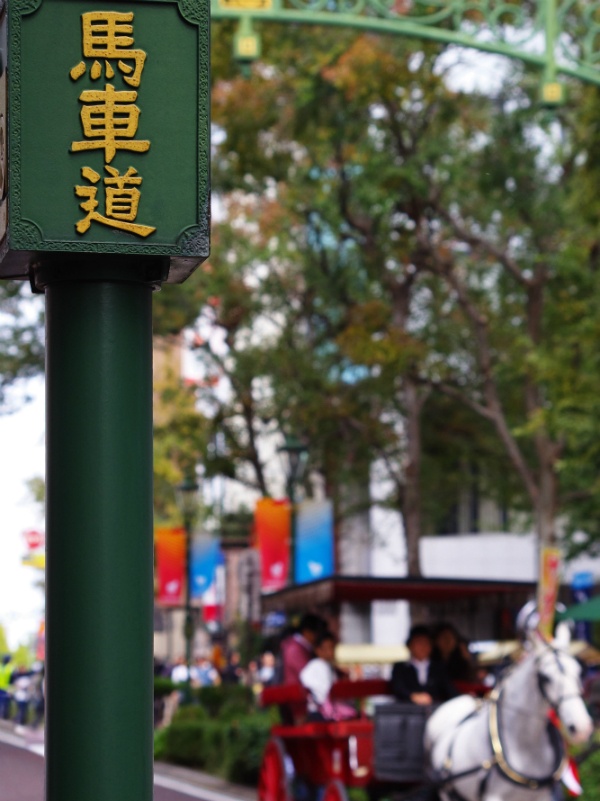
https://pixta.jp
Bashamichi: Bashamichi (literally "Horse-Drawn Carriage Street") is an area of Yokohama where many western firsts were introduced—the first gas lights, the first ice cream shop, first boulevard trees and more. Every year they host the Bashamichi Festival, where horse-drawn carriages, rickshaws and more parade the streets and harken back to yesteryear.
These days, this swanky little area is home to shopping, upscale bars and mouth-watering restaurants. We recommend the Bashamichi Taproom, an American-style BBQ and craft beer pub from the American and Japanese power couples behind Baird Beer. With authentic smoked meats and a great selection of tasty craft brews on tap, it's hard not to become a regular!
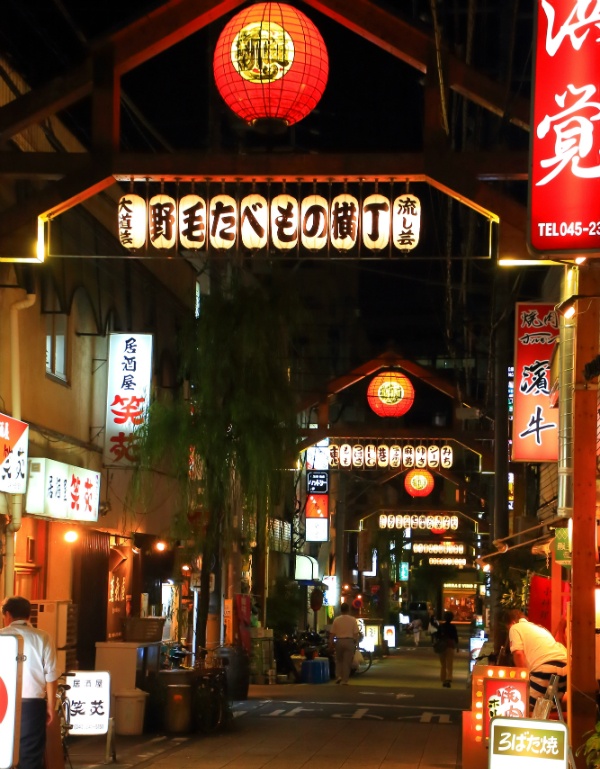
https://pixta.jp
Noge: To witness the true face of Yokohama nightlife, be sure to stop by Noge for a late night drink. It's discreetly wedged between Minato Mirai and Kannai, on the south side of Sakuragicho Station. This boozy, jazz-music-loving strip is overflowing with gritty old-style charm, and the energy here is anything but tired.
Top 5 Must-Eats in Yokohama
You're sure to work up an appetite after exploring the city, so be sure to try some of these local Yokohama specialties.
1. Spaghetti Napolitan
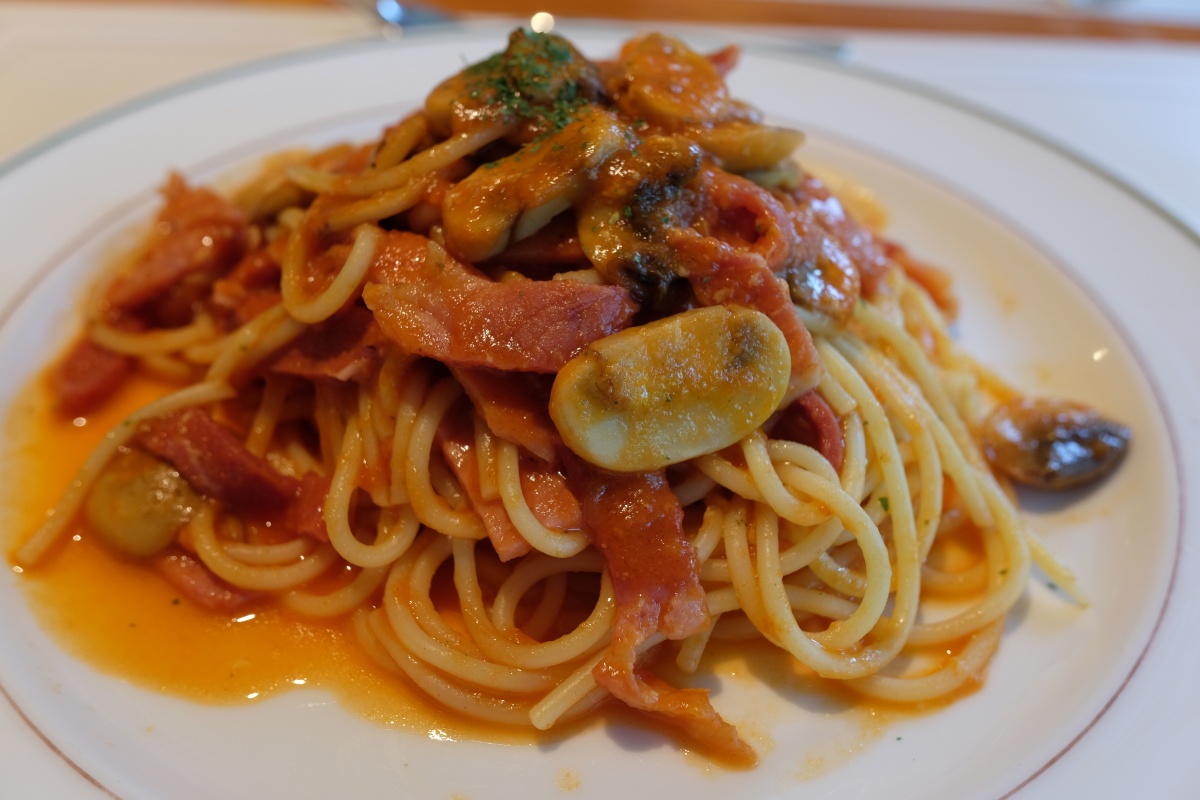
https://www.flickr.com/photos/mawari/35600399290/in/photolist-WeTmpL-WeSggS-NtTq9w-WQfB2k-26MffBp
Adding spaghetti to the list may sound like blasphemy, but it may be the most authentically "Yokohama" dish out there. This dish was created in 1945 when US General Douglas MacArthur visited Yokohama’s Hotel New Grand. Unsure what to make, the hotel’s head chef Shigetada Irie concocted this tomato pasta offering after being inspired by U.S. military rations. It's been a staple of the hotel menu ever since, and iterations of the original dish have been pleasing children around the country for decades.
2. Dim Sum
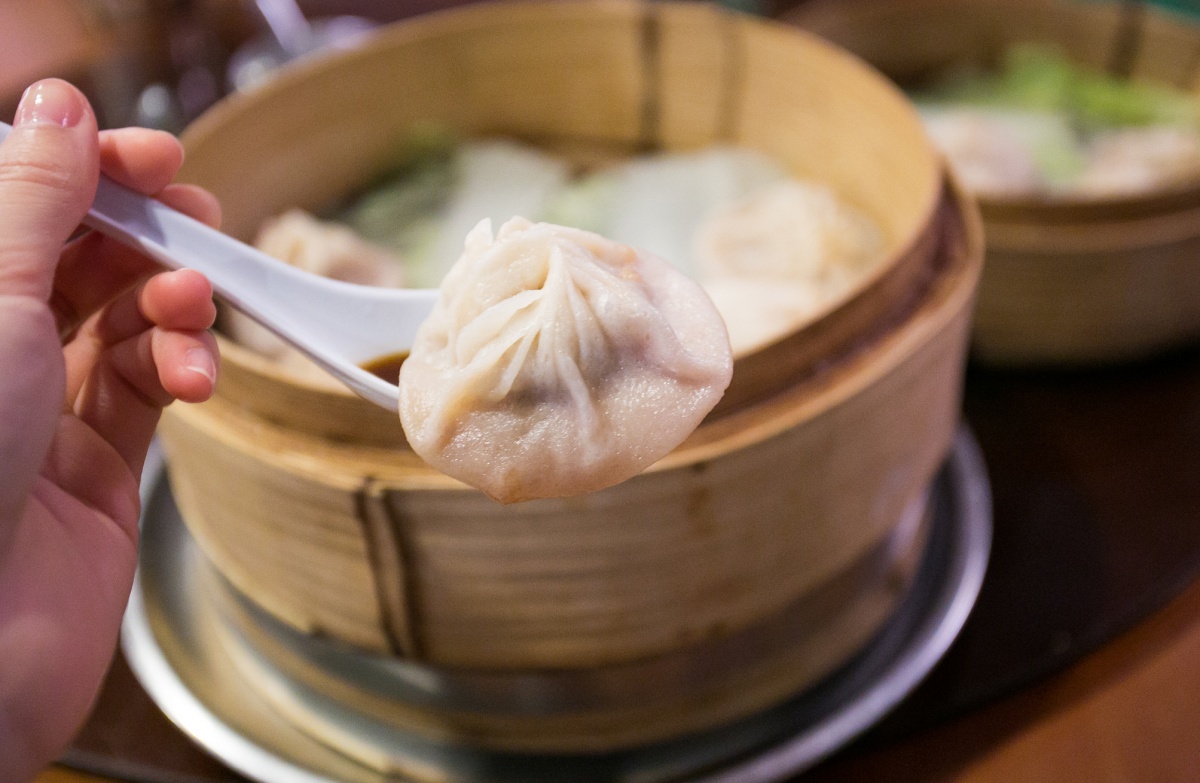
https://www.flickr.com/photos/cityfoodsters/9364303906/in/photolist-fguviC-ruFHwU-5dLkiD-feaZoN-bW4iLm-6xETMZ-9rQsim-5GJ8N3-dkHnrB-97f6ZR-2FJqkH-6J4x6d-926xhN-iQb9ME-iQanD3-5MoM6H-6Rtsqo-2Evuq-9zSep8-7kLqy4-dF67Uu-6xK1iA-pd1iP-4rhbsu-9FvPr6-5GDQFV-dZcGsj-
It's practically a crime to visit Chinatown in Yokohama without snacking from one of the many food stalls dotted along the street, or stopping in to some of the area's legendary dim sum restaurants. They have Japanese-style gyoza dumplings, classic Chinese shui jiao, doughy char siu pork buns, soup dumplings and more! The dining options are endless, and your stomach will thank you later.
3. Sanma-men
Another iconic Yokohama favorite, sanma-men is a hearty, Chinese-style riff on everyone's favorite noodle dish, ramen. A bit thicker than your standard bowl, it's typically served in a shoyu (soy sauce) soup and practically overflowing with stir-fried veggies like bean sprouts.
4. Dessert at Pompompurin Café
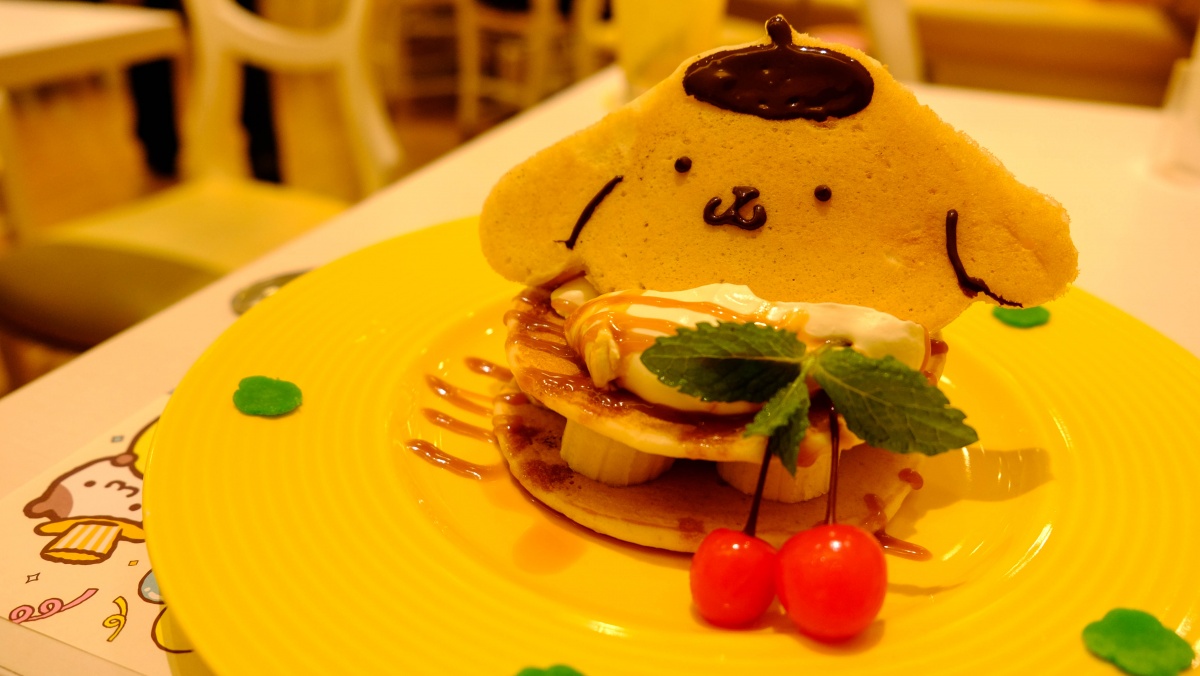
https://www.flickr.com/photos/ser_is_snarkish/27162245640/in/photolist-XwHsA6-HDVRxd-XuEk1q-HDVSNu-HoeBj1-GSR1zo-Ygeg6j-GT1d5i-XuEhFq-XuEgDq-YgegiJ-J6voLJ-J9yTii-J32Sm2-J32tGp-Ywih9g-HdDBBR-YvtSmh-J32uo4-J9zbWz-YvtVo9
For something a little more Instagram-worthy, stop by the ultra-kawaii Pompompurin Café in Yokohama Sotetsu Square. This café chain is exclusively dedicated to Sanrio’s Golden Retriever character, Pompompurin. Jiggly puddings, towering parfaits and adorable characters combine to create an almost overwhelming amount of cuteness!
5. Kirin Yokohama Beer Village
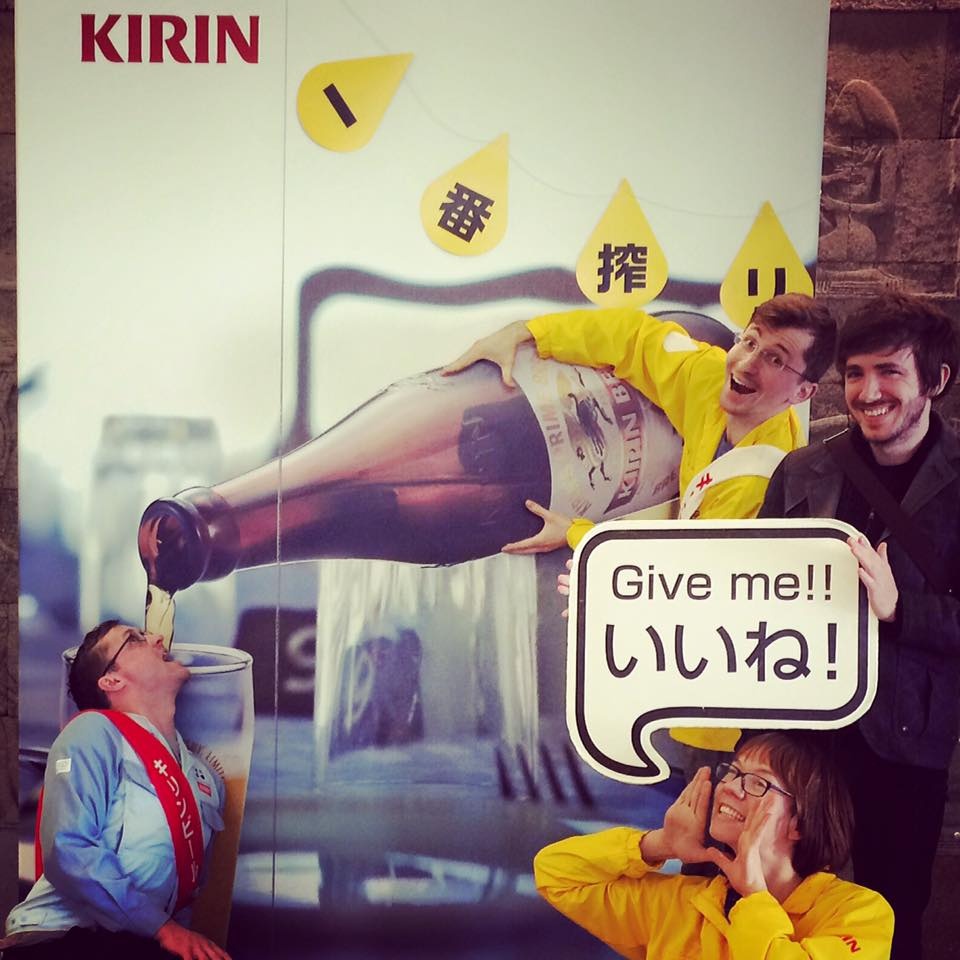
If there’s one place to enjoy a cool beer by the bay it’s here at the Yokohama-born Kirin Beer Village. For the uninitiated, Kirin was established in 1907, and has grown into one of Japan's leading brewers. The beer village offers three different guided tours that take visitors behind the manufacturing process, and they all include a complimentary beer tasting at the end. The best part? They're all free! The tours tend to fill up fast, so be sure to reserve your spot in advance.
How to Get Around Yokohama
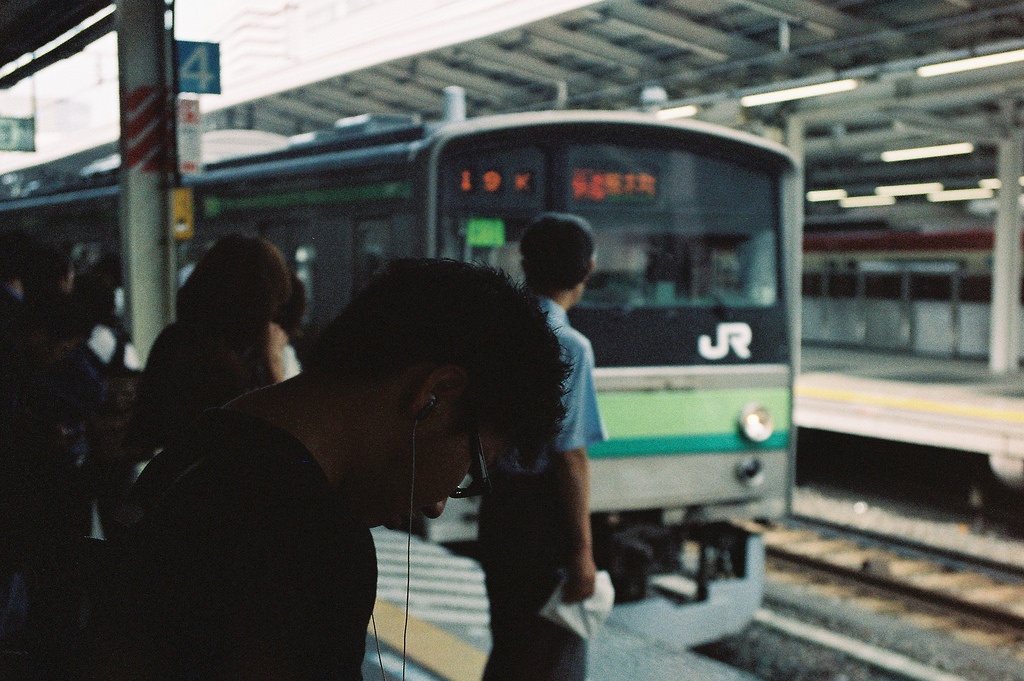
https://www.flickr.com/photos/taotsu-pro/4903190374/in/photolist-8th8F5-7mmkQi-7rm3wx-9axBtr-6gT4o2-a4kMkv-pTj3vM-jPTPRY-8t1f9U-692Kou-5AtJ1k-8CBdK6-8qSjKQ-6Fwdsy-qmUgAM-7rpHVw-dRqLFy-exejmf-7c9Snd-eisJRt-6FJUcy-32Vhny-8CEiZf-dKUuu5-7EEmSf-6mmRC4-2iXGgj-8
Yokohama is a pedestrian-friendly city, and many of the main sights are within walking distance of one another when the weather is pleasant. The city also has an extensive railway system that makes getting there and getting around very simple. Yokohama Station is a major hub in Kanagawa Prefecture, one of the busiest stations in the country as a whole, and services a total of 11 different train lines. More on that in a moment.
Yokohama has two subway lines. The first is the Minatomirai Line, which passes through most of Yokohama's main points of interest, including Minato Mirai, Motomachi Chukagai (Chinatown) and Yokohama Station. The second is the Subway Blue Line, which connects Yokohama Station with Shin-Yokohama Station. The Blue Line also passes through the central neighborhoods of Kannai and Sakuragicho.
Sports fans will want to take note of the JR Yokohama Line. It stops at Shin-Yokohama Station and Kozukue Station, which is quite close to Nissan Stadium.
For sightseeing around the city, hop aboard the Akai Kutsu loop bus. Departing from Sakuragicho Station, this vintage red bus will take you through the main sightseeing spots via the harbor, with stops at Minato Mirai, Chinatown and Yamashita Park. To get to the Sankeien Garden you’ll have to catch a bus from Yokohama Station. The number 2, 8 or 148 bus will get you within five minutes walking distance from the garden grounds.
To see the city from a different perspective, Yokohama also takes full advantage of its location by the sea with a wide variety of cruise options. The Seabass in particular is a popular scenic boat route that travels between Yokohama Port and Yamashita Park multiple times a day.
How to Get to Yokohama
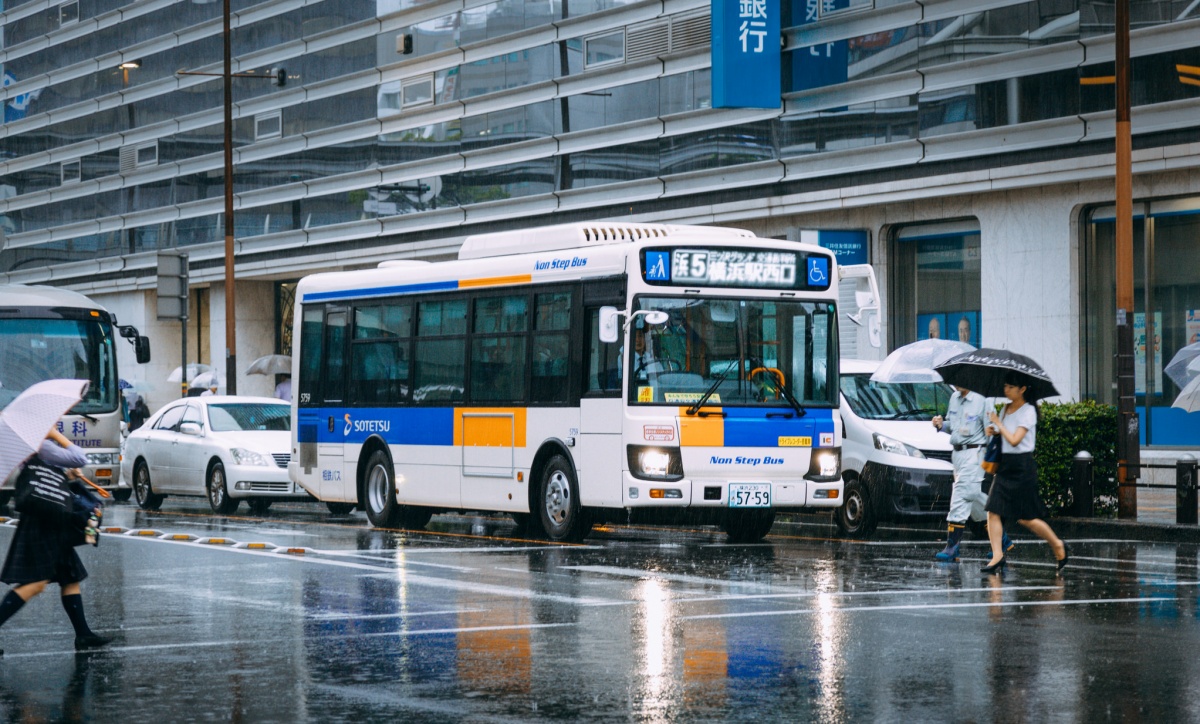
By Plane
Positioned between Tokyo and Yokohama, Haneda Airport is the closest airport to the city, and is highly recommended since it services both international and domestic flights. From Haneda, the Keikyu-Kuko Line heading to Shin-Zushi is the most direct route to Yokohama Station. The trip takes about 30 minutes and costs ¥450 one-way. Visitors flying into Narita Airport can take an Airport Limousine Bus to the Yokohama City Air Terminal next to Yokohama Station. Note that it takes longer (about 85 minutes) and costs ¥3,600 (about US$33) one-way.
By Train
Shin-Yokohama Station is the only stop for Shinkansen, Japan's famous bullet trains. It is serviced by the JR Tokaido Line.
If you're traveling to Yokohama from Tokyo or other nearby areas, you have your choice of any line that stops at Yokohama Station. The breakdown looks something like this:
JR Lines
Tokaido Main Line
Yokosuka Line
Yokohama Line
Shonan-Shinjuku Line
Keihin-Tohoku Line
Negishi Line
Keikyu
Keikyu Main Line
Sagami (Sotetsu)
Sagami Railway Main Line
Tokyu
Tokyu Toyoko Line
Municipal Lines
Minatomirai Line
Blue Line
By Bus
In addition to the Yokohama City Air Terminal previously mentioned, Yokohama also has the East Exit Bus Terminal near Yokohama Station, which is a stop for many long distance highway buses from major cities around Japan such as Osaka, Kobe and more. Although not as luxurious as bullet trains, options like such as Willer Express or Japan Bus Lines are very affordable if you don't have access to a JR Pass.
Yokohama Local Tips
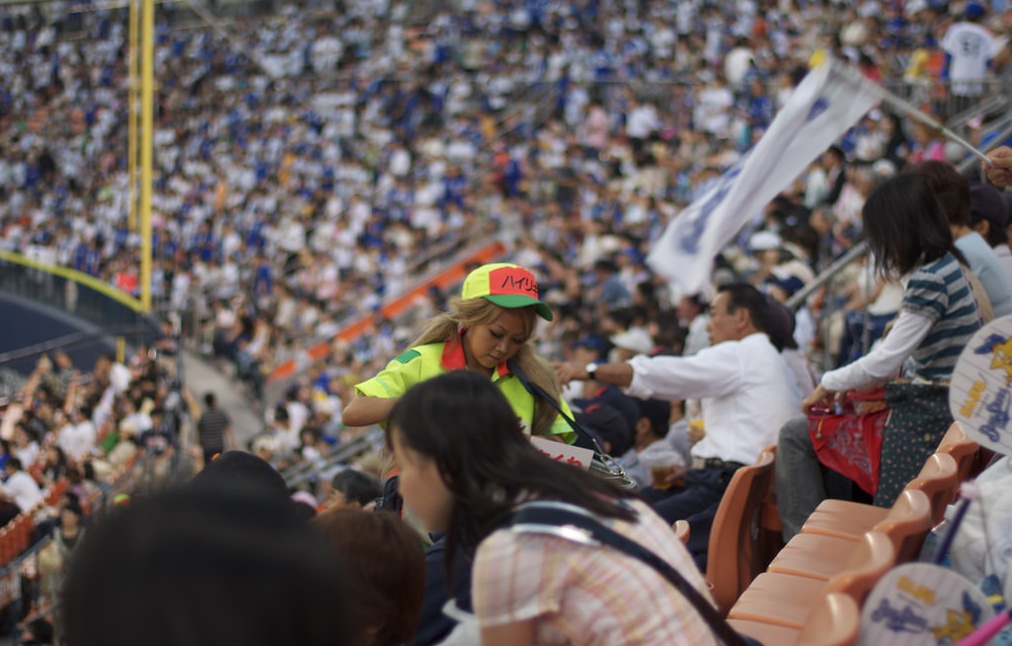
https://www.flickr.com/photos/picsoflife/5724610890/in/photolist-9HS8nL-4meAak-4miD7q-9HS7XE-e9VL6t-8r7B5W-6mmQec-8vsg34-8CBcax-dsjhDw-4eWb14-qdXK2V-3g45Hc-5uLs2F-g7mLYs-5YzJ5g-euicKn-9HPs1e-9XSPM6-4qVbKD-awUmXP-6mqYMy-obbvd-6vSrqs-3PMbwq-4pVYNb-33v9kZ-9H
Here are a couple of tips to help you make more of your time in the city by the bay!
1. Yokohama is an excellent city for sports fans of all styles, especially baseball and rugby. During baseball season, make your way to Yokohama Stadium to watch the local team DeNA BayStars in action, before visiting one of the many sports bars near Kannai for a drink. Next year the city will also hold some of the main 2019 Rugby World Cup events at Nissan Stadium in Shin-Yokohama, so if you're in town between late September to early November, you should definitely visit!
2. Koganecho is a wonderful area for an afternoon stroll if you're looking to see a more artistic side of the city. Once a seedy red light district, this neighborhood is now a lively creative hub, home to monthly artist fairs and autumn festival celebrations.
3. Yamashita Park is a beautiful area that stretches along the waterfront, and is another great area to enjoy a leisurely walk. There's a huge ship, the Hikawa Maru, anchored there as well.
4. The Hakkejima Sea Paradise is a little removed from the city, and takes about 30 minutes to get to by train. But it's a large amusement park with lots of attractions, aquariums, restaurants and more. It's a great place for some family fun.


